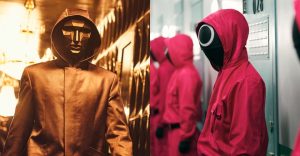Carnival Row: 10 Hidden Details Everyone Missed
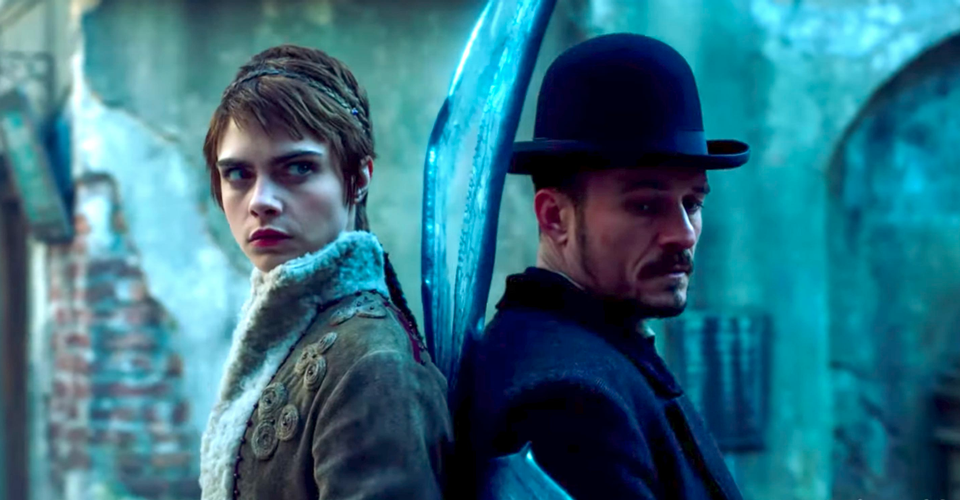
Carnival Row, the latest steampunk fantasy series released by Amazon Studios, is full of delights both frightening and enchanting, from flitting fae folk to brooding fawns, and every fantastical creature in between. It follows the aftermath of humankind’s conquest of countless supernatural kingdoms, with the refugees of such conflicts spilling back into the human capital. The cost of the pursuit of their natural resources means a ravaged homeland and eking out a desperate living in a new one.
It’s not only a timeless tale of the atrocities of war. It’s also a celebration of a love that can span continents and cultures between Ryloft Philostrate (Orlando Bloom), a human member of the constabulary, and Vignette Stonemoss (Cara Delevingne), a wily member of the fae. Together, they must solve a series of ghastly murders in the capital, dodging prejudice as well as bullets. As new clues come to light, shadows from their past are revealed. Below you’ll find 10 hidden details everyone missed in Carnival Row, now streaming on Amazon Prime.
10 IT WAS BASED ON A FILM SCRIPT

Series co-creator Travis Beacham once envisioned Carnival Row as a major motion picture, with its fantasy environment and creatures getting the franchise treatment like Lord of the Rings or Harry Potter. Instead, it was adapted for Amazon Prime.
Originally some of the biggest names in Hollywood were attached to produce or direct, like Neil Gaiman, Guillermo Del Toro, and Neil Jordan. By being made into an Amazon Prime series, much more of the rich world of Mesogeo, Tirnanoc, and the Burgue can be explored in future seasons.
9 THE MURDERS WERE BASED ON JACK THE RIPPER

Initially, Inspector Philostrate is tracking a killer that murders its lower class fae citizens and leaves them horribly disfigured. The inhabitants of Carnival Row, the impoverished section of the Burgue, where survival of the fittest is the only way to live, are terrified he’ll pick them off one by one.
The hushed murmurs of this “Jack business” refers to the Victorian serial killer Jack the Ripper, thought to be a member of the elite class, who murdered British prostitutes — some say out of a moral obligation — to cleanse the city of London of their degradation.
8 ALL THE MYTHOLOGICAL REFERENCES
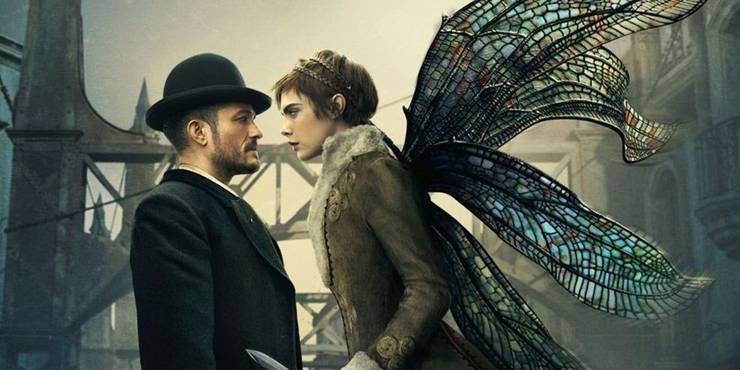
One of the most prominent sources of mythological magic Carnival Row draws from is Celtic mythology. The land of the fae folk is called Tirnanoc, which is derived from the Gaelic concept for paradise, Tir na Nog, believed by the Irish to be a land of everlasting youth and happiness.
Another resource of mythology comes from Jewish folklore. One of the creatures in the series is called a Darkasher, derived from joining pieces of dead animals and bringing the creature to life with sorcery to do your bidding. It’s based on a Golem, normally created from inanimate matter (such as clay) for the purpose of carrying out its master’s will.
7 ALL THE SHAKESPEARE REFERENCES
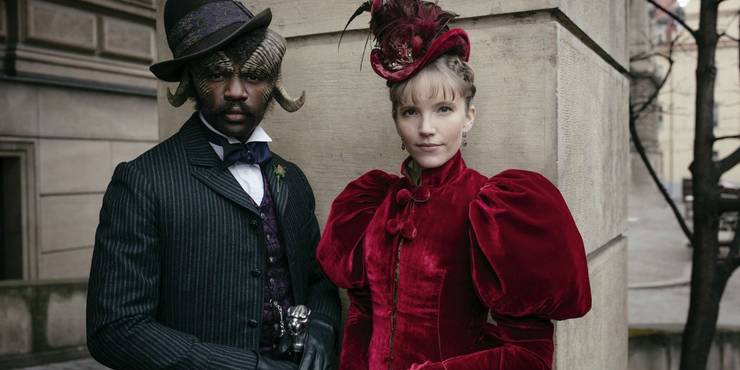
There are many direct and indirect references to William Shakespeare’s popular play concerning all manner of fantastic creatures, A Midsummer Night’s Dream. One of the most obvious ones is that fauns are nicknamed “pucks,” after the mischievous trickster.
Other references include Philo’s surname, Philostrate (a minor character in the play), and mention of an Oberon Square. Shakespeare also used compound words for his fairies, such as Mustardseed and Peaseblossom, which Carnival Row mimics with surnames like Stonemoss and Spurnrose.
6 KINGDOM OF THE MOON

Prior to his employment with the Burguish constabulary, Inspector Philostrate was in the Burguish Army. To pass the time between engagements he liked to read Kingdom of the Moon. Though not a real book, it’s based on books of the Victorian Era and earlier, which often included science-fiction concepts that were generations ahead of their time.
Philo’s book follows a rogue inventor that builds a rocket to travel to the moon, where he falls in love with a lunar princess. This is much like Jules Verne’s book From The Earth to the Moon published in 1863, and Edgar Rice Burroughs’ John Carter of Mars from 1912.
5 FAE AND HUMAN LOVE STORIES

The love story between Philo and Vignette may seem like just another take on another popular fairytale of star-crossed lovers Romeo and Juliet, involving two people from different backgrounds trying to preserve their bond against all odds. Inspiration for their love story actually stretches back long before William Shakespeare wrote that play.
In Celtic mythology, stories concerning fae folk falling in love with humans and vice versa go back for centuries. For instance, the ancient Ballad of Tam Lin concerns the love of the Queen of the Fairies for the Scottish Highlander Tam Lin, and Morgan Le Fey, Queen of the Fae of both Welsh and Arthurian Legend often took human male lovers.
4 TITANIA
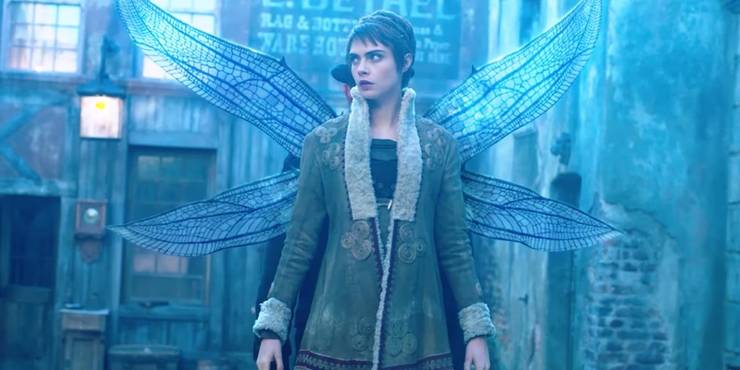
The fae folk make constant references to Titania, usually to indicate how serious something is. Where the humans of the Burgue constantly reference “the Martyr” as their deity of choice, the fae folk invoke Titania, who was introduced as the Queen of the Faeries in Shakespeare’s A Midsummer Night’s Dream.
Titania has since been mentioned many times as the Queen of the Fairies, from William Blake’s famous painting of her and Oberon and Johann Wolfgang von Goethe’s Faust I, to the popular manga and anime Sword Art Online, and even one of the moons of Uranus.
3 PUNCH AND JUDY

Runyan Millworthy, pontificating street entertainer of Burgue and friend of the fae folk and other Critch, produces a long-standing tradition in Victorian street shows. With his small theater house on wheels, he uses the tiny goblin-like creatures known as the Kobolds to dress in costume and re-enact famous scenes from plays.
The most famous version of this practice was known as Punch and Judy, and it involved puppets not only performing scenes from plays, but making political commentary. Citizens often used the street shows as a form of entertainment and to inform themselves of current events through humor.
2 PARADISE LOST

Mr. Agreus, the austere faun that took residence across from Ezra and Imogen Spurnrose at Finistre Crossing, sought to do so with a specific purpose in mind — to disrupt the feelings of entitlement and smug pride enjoyed by the aristocratic human families that lived there.
One way he reveled in destroying their superiority was by buying outright those things they felt owed to them based purely on their affluence. One of these is a gorgeous painting, The Rising, that depicts a human being pulled either heavenward or hellward, but the demon resides at the top of the painting, and the angel at the bottom, mimicking the famous painting “Paradise Lost” that captures the same paradox.
1 THE POLITICS OF AN EMPIRE

In order for the British Empire — which the Burgue is very much based on — to augment its coffers and its borders, it had to spread its forces throughout the continents. The Burgue does the same, extending its conquest into fairytale kingdoms without a second thought to the commonwealth of the people that lived there.
The British Empire, like the Burgue, then had to deal with the consequences of its “growing pains” when all the refugees from the foreign conflicts returned to England to seek aid. The citizens of the Burgue detest their own resources being stretched thin at home by fae, fauns, and everyone else, causing political strife like that which is still felt in Britain to this day.
About The Author












